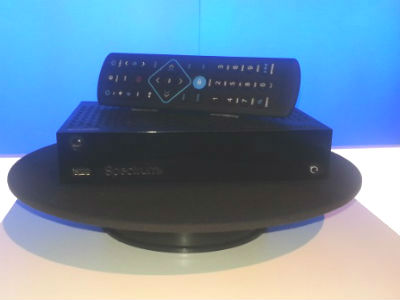Charter’s ‘WorldBox’ Rollout Exceeds 2 Million Units

Charter Communications continued to accelerate the rollout of its hybrid QAM/IP WorldBox platform as it also prepares to launch a mobile product that leans on its Verizon MVNO agreement by mid-2018.
Charter, which restarted its all-digital project last year, has deployed about 2 million WorldBox units so far, company chairman and CEO Tom Rutledge, said Friday on company’s Q4 2017 earnings call.
That about doubles the number of WorldBoxes that Charter had deployed at the end of the third quarter of 2017. In addition to supporting IP and QAM transport, Charter’s WorldBox also supports a cloud-based guide and a downloadable security platform that will enable it to work across Charter’s entire footprint, including systems obtained from the Time Warner Cable and Bright House Networks acquisitions.
RELATED: Charter Has Deployed 1 Million-Plus WorldBoxes
Following earlier work with vendors such as Cisco Systems and Humax, Charter has since tapped Arris for a WorldBox 2.0 project that is targeting devices that are cost-efficient than the predecessor WorldBox models.
Charter is also using cloud technology from ActiveVideo (now jointly owned by Charter and Arris) to bring its new Spectrum Guide to the WorldBox as well as older, non-IP boxes.
RELATED: Arris, Charter Close $135M ActiveVideo Acquisition
Multichannel Newsletter
The smarter way to stay on top of the multichannel video marketplace. Sign up below.
Rutledge said Charter expects to have Spectrum Guide available to virtually all its video customers by the end of 2018, including “mixed markets” like Los Angeles where legacy Charter systems are contiguous with legacy TWC systems. The expanded guide rollout will also expose those customers to Charter’s larger VOD library (about 50,000 HD titles).
Existing customers in those markets will, over time, have the choice to switch to the new Spectrum Guide using their remote control, Rutledge said.
He also reiterated a plan to integrate OTT services such as Netflix, viewing Spectrum Guide as a “"hub for accessing content that originates from us or from somewhere else." Those third-party apps will first be made available on the WorldBox and extend to older box types over time,” Rutledge said. Charter will also use ActiveVideo’s cloud technology to bring those apps to IP- and non-IP capable boxes.
Mobile Pricing Not Yet Set
Shifting to wireless, Charter’s goal with its new mobile product is to gain and retain more cable customers.
“We haven’t decided how to price it,” Rutledge said. “But our long-run view on pricing is that we should offer a good value for high quality products and we should integrate that into our overall product packaging scenario."
Perhaps an indication of what Charter is considering, Rutledge did heap some praise on Comcast’s rollout of Xfinity Mobile, which offers unlimited and by-the-Gig data options. “I think they did a really nice job with their pricing model,” he said.
RELATED: Xfinity Mobile Starting to See ‘Real Momentum’
Rutledge also expanded on Charter’s longer-term plan to use a mix of licensed and unlicensed spectrum.
Riffing on keynote comments he made last fall at the SCTE/ISBE Cable-Tec Expo in Denver, Rutledge again referred to it as “6G” – Charter’s tongue-in-cheek, pre-spec definition of the integration of small cell architecture using unlicensed and licensed spectrum working in tandem with its DOCSIS 3.1 rollout.
“We expect that over time our existing infrastructure will put us in the unique position to economically deploy new, powerful products that benefit from small cell connectivity,” Rutledge said. "We may want to take additional licensed spectrum and combine with WiFi spectrum to create an even broader in-home, in-business and mobile platform." but he stressed that there’s no plans currently to launch that in 2018 or 2019.
Rutledge also downplayed fixed 5G as a significant threat to cable’s broadband business, noting that those wireless networks will still need to be backed up with solid wired backhaul systems.
“I see all the same kind of costs necessary to build a 5G network as there is to build a wireline network, and maybe more,” he said.
As for DOCSIS 3.1, Charter plans to deploy that technology and enable 1 Gbps speeds (initially in the downstream) across its footprint and all 50 million passings by the end of 2018. Charter has deployed D3.1 to eight markets so far.
RELATED: Charter Rolls DOCSIS 3.1 to Seven More Markets
Charter has also started to make 200 Mbps its minimum speed in about 18% of its footprint, including systems in Hawaii, New York and Charlotte. Charter currently offers minimum speeds of at least 100 Mbps to 99% of its footprint, up from 50% in June of last year.
But Charter, given some of the logistical issues with that (like modem transfers and the MSO’s ongoing all-digital upgrades), won’t yet commit on when 200 Mbps will be the minimum in all markets.
“We haven’t decided how fast we're going to go with that and how far we'll roll that out entirely this year,” Rutledge said.
